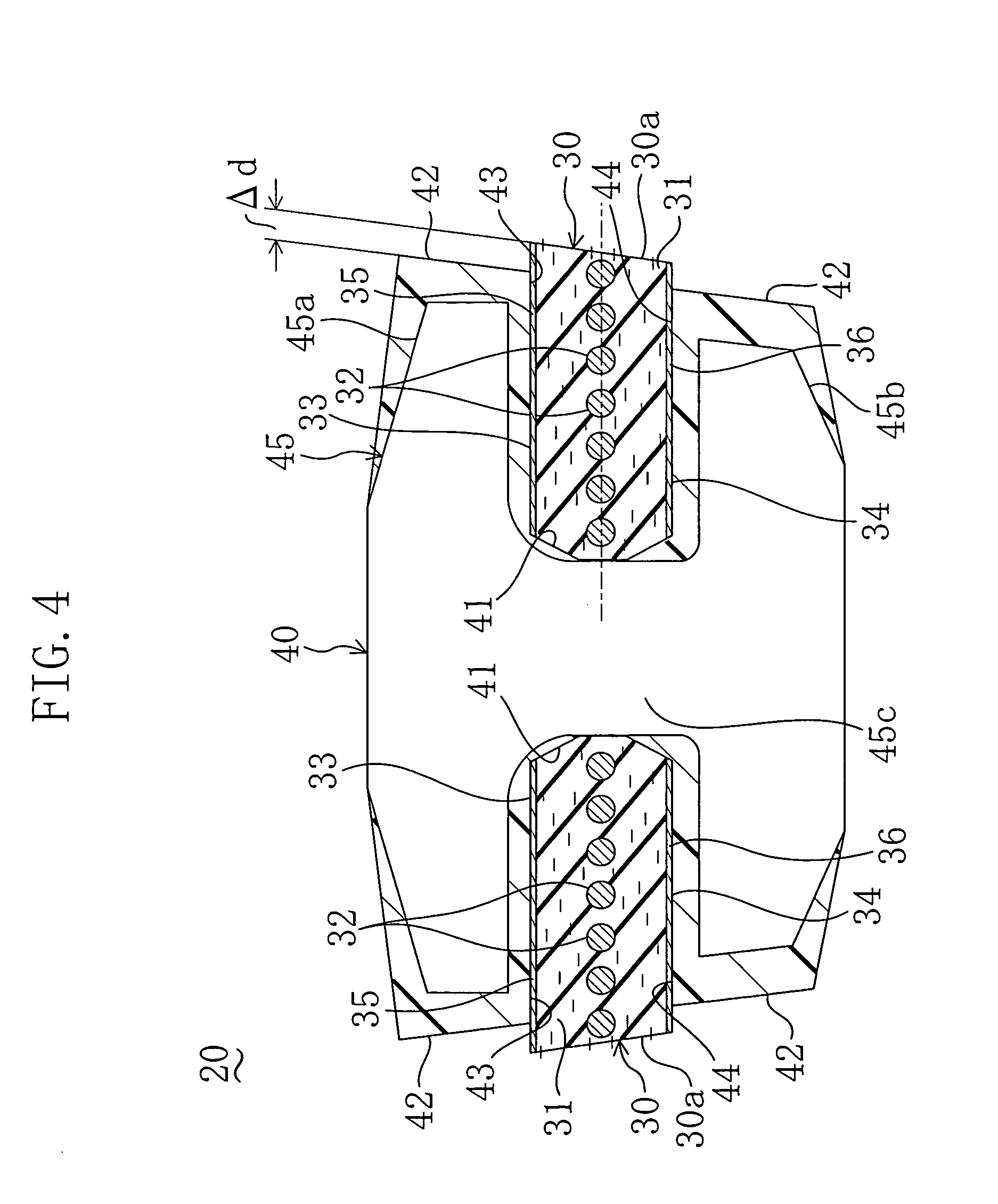Rubber composition for high-load transmission belt and high-load transmission belt from the rubber composition
- Summary
- Abstract
- Description
- Claims
- Application Information
AI Technical Summary
Benefits of technology
Problems solved by technology
Method used
Image
Examples
Embodiment Construction
[0061] Hereinafter, embodiments of the present invention will be described with reference to the drawings.
[0062]
[0063] Cogged V-Belt
[0064] As shown in FIGS. 1 and 2, a cogged V-belt 10 comprises a tension rubber layer 1 at the back face, a compression rubber layer 2 at the inner face, an adhesion rubber layer 3 interposed between the tension and compression rubber layers 1 and 2, and a cord 4 embedded in the adhesion rubber layer 3. The surface of the tension rubber layer 1 is provided with a large number of cogs 5 at specified pitches in the belt lengthwise direction to have a corrugated shape. The surface of the compression rubber layer 2 is also provided with a large number of cogs 6 at specified pitches in the belt lengthwise direction to have a corrugated shape. Further, the surface of the compression rubber layer 2 is covered with a bottom fabric 7. The cord 4 is placed spirally in the adhesion rubber layer 3 with its turns extending in the belt lengthwise direction and alig...
PUM
| Property | Measurement | Unit |
|---|---|---|
| Fraction | aaaaa | aaaaa |
| Fraction | aaaaa | aaaaa |
| Percent by mass | aaaaa | aaaaa |
Abstract
Description
Claims
Application Information
 Login to View More
Login to View More - R&D
- Intellectual Property
- Life Sciences
- Materials
- Tech Scout
- Unparalleled Data Quality
- Higher Quality Content
- 60% Fewer Hallucinations
Browse by: Latest US Patents, China's latest patents, Technical Efficacy Thesaurus, Application Domain, Technology Topic, Popular Technical Reports.
© 2025 PatSnap. All rights reserved.Legal|Privacy policy|Modern Slavery Act Transparency Statement|Sitemap|About US| Contact US: help@patsnap.com



